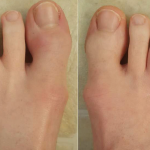 BALTIMORE—Psoriatic arthritis (PsA) was once dismissed by some as “rheumatoid arthritis with rash.” Despite that attitude, the understanding of PsA, its diagnosis and treatment, and management of comorbidities have come a long way.
BALTIMORE—Psoriatic arthritis (PsA) was once dismissed by some as “rheumatoid arthritis with rash.” Despite that attitude, the understanding of PsA, its diagnosis and treatment, and management of comorbidities have come a long way.
At the 18th Annual Advances in the Diagnosis and Treatment of the Rheumatic Diseases, held May 13–14 at the Johns Hopkins School of Medicine, Baltimore, Ana-Maria Orbai, MD, MHS, associate professor of medicine and director of the Psoriatic Arthritis Program at the Johns Hopkins School of Medicine, began the session by discussing the latest medications that have entered the PsA armamentarium.
Medication Overview
Risankizumab is an anti-interleukin (IL) 23 monoclonal IgG1 antibody. In January, the U.S. Food & Drug Administration (FDA) approved risankizumab to treat adults with PsA. Unlike some other medications approved to treat PsA and psoriasis, the treatment dose is the same for both conditions. In terms of safety profile, some of the main potential side effects include upper respiratory tract infections, headache, fatigue, injection-site reactions and tinea infections.
The ACR20 and ACR50 response rates to risankizumab are good for the treatment of patients naive to biologics, as well as for patients with prior biologic use, noted Dr. Orbai.
In the KEEPsAKE 1 trial, 964 patients with active PsA who were intolerant to or for whom one or more conventional synthetic disease-modifying anti-rheumatic drug (csDMARD) proved inadequate were randomized to receive 150 mg of risankizumab or placebo at weeks 0, 4 and 16. With a primary end point of an ACR20 response at week 24, the study found a significantly greater proportion of patients receiving risankizumab achieved that end point (57.3% vs. 33.5% for placebo; P<0.001).1 (Note: An ACR20 response is defined as a 20% improvement in the number of tender and number of swollen joints, and a 20% improvement in three of the following five criteria: patient global assessment, physician global assessment, functional ability measure, visual analog pain scale, and erythrocyte sedimentation rate or C-reactive protein level.)
In December 2021, the FDA approved upadacitinib, a Janus kinase (JAK) inhibitor, for the treatment of patients who have had inadequate response to, or are intolerant of, one or more tumor necrosis factor-α (TNF) inhibitors.
Dr. Orbai addressed the FDA boxed warning for JAK inhibitors. This warning notes an increased risk for serious infections, mortality, malignancy, major adverse cardiac events and thrombosis. However, similar to risankizumab, upadacitinib proved beneficial in treating patients naive to biologics or with prior biologic use. Also, data indicate that upadacitinib may slow the radiographic progression of PsA, which is important to prevent joint deformities and impaired function in patients.
Next, Dr. Orbai discussed the CONTROL strategy trial. This trial compared the initiation of adalimumab with increased dosing of methotrexate in patients with PsA for whom 15 mg of methotrexate weekly had proved inadequate.
In the study’s initial part, patients on 15 mg of methotrexate per week were randomized to either add 40 mg of adalimumab every other week to their regimen or to have their dose of methotrexate increased to 20–25 mg per week.
In the second phase of the trial, patients in the adalimumab plus methotrexate group who responded to this combination discontinued methotrexate. Patients in this group who did not respond had adalimumab increased to 40 mg per week. In the methotrexate monotherapy group, patients who responded to the increased dosing continued methotrexate monotherapy, and patients who did not respond were transitioned to the addition of 40 mg of adalimumab every other week.
The results: Several findings are of note. First, more patients for whom 15 mg of methotrexate weekly proved inadequate achieved minimal disease activity at week 16 with the addition of adalimumab than with methotrexate dose escalation (40% vs. 13%). Among adalimumab responders, the withdrawal of methotrexate still allowed 80% of patients to maintain minimal disease activity through week 32. Among the patients who responded to the increase in methotrexate dosing, continuation of methotrexate kept 67% in minimal disease activity through week 32.
Also, Dr. Orbai pointed out that escalation of methotrexate dosing did not lead to minimal disease activity for most patients. However, the addition of adalimumab for these patients may help, indicating it’s often not too late to add a TNF inhibitor. She also said switching from biweekly to weekly adalimumab is helpful for only about 30% of patients. Thus, transitioning to a different medication is likely more appropriate.2
Conflicting evidence exists as to whether PsA is associated with an increased risk of all-cause mortality compared with the general population. However, a clear association exists between cardiovascular disease & psoriasis.
Regarding consequences of long-term PsA, conflicting evidence exists as to whether PsA is associated with an increased risk of all-cause mortality compared with the general population. However, a clear association exists between cardiovascular disease and psoriasis. With this finding in mind, joint guidelines from the American Academy of Dermatology and the National Psoriasis Foundation indicate the risk for cardiovascular disease should be multiplied by 1.5 when using a risk calculator if the patient has psoriasis with at least 10% body surface area involvement or qualifies for systemic therapy or phototherapy. These guidelines also recommend screening for comorbidities, such as diabetes, hypertension and hyperlipidemia.
Dr. Orbai noted that TNF inhibitor therapy may be protective against cardiovascular disease in patients with PsA, but management of cardiovascular risk factors remains essential for all patients.3,4
Other Options
An important point in the discussion related to the potential to decrease PsA disease activity by reducing the burden of metabolic syndrome through diet, exercise and appropriate medications. Given these approaches, increasing immunosuppression for patients with PsA and ongoing disease activity may not always be the answer. Rather, managing such conditions as diabetes, hypertension, hyperlipidemia and obesity, and working together with the patient, primary care physician and cardiologist, when needed, may help a great deal.
PsA Subtypes
Dr. Orbai concluded by discussing ways to classify the subtypes of PsA. In a study conducted by Eder et al., ultrasound imaging and gene expression clustering were used to identify subtypes of patients with PsA based on location of inflammation (i.e., synovitis-predominant disease, enthesitis-predominant disease and peritendonitis-predominant disease). Among these groups, patients with peritendonitis-predominant disease had the most active overall disease, and it appeared more men than women were in this group.5 This study provides interesting insights into better understanding the heterogeneity of PsA and more work is needed on this subject.
Jason Liebowitz, MD, completed his fellowship in rheumatology at Johns Hopkins University, Baltimore, where he also earned his medical degree. He is currently in practice with Skylands Medical Group, N.J.
References
- Kristensen LE, Keiserman M, Papp K, et al. Efficacy and safety of risankizumab for active psoriatic arthritis: 24-week results from the randomised, double-blind, phase 3 KEEPsAKE 1 trial. Ann Rheum Dis. 2022 Feb;81(2):225–231.
- Coates LC, Tillett W, D’Agostino MA, et al. Comparison between adalimumab introduction and methotrexate dose escalation in patients with inadequately controlled psoriatic arthritis (CONTROL): A randomised, open-label, two-part, phase 4 study. Lancet Rheumatol. 2022 Apr 1;4(4):e262–e273.
- Elmets CA, Lim HW, Stoff B, et al. Joint American Academy of Dermatology–National Psoriasis Foundation guidelines of care for the management and treatment of psoriasis with phototherapy. J Am Acad Dermatol. 2019 Sep;81(3):775–804.
- Wu JJ, Guérin A, Sundaram M, et al. Cardiovascular event risk assessment in psoriasis patients treated with tumor necrosis factor-α inhibitors versus methotrexate. J Am Acad Dermatol. 2017 Jan;76(1):81–90.
- Eder L, Li Q, Rahmati S, et al. Defining imaging sub-phenotypes of psoriatic arthritis: Integrative analysis of imaging data and gene expression in a PsA patient cohort. Rheumatology (Oxford). 2022 Feb 14;keac078. Online ahead of print.




